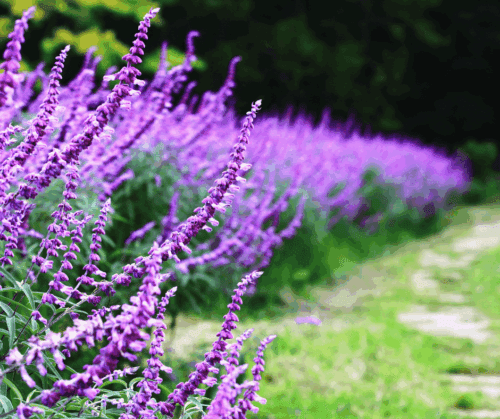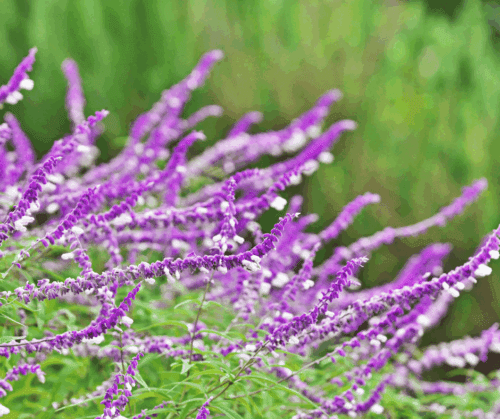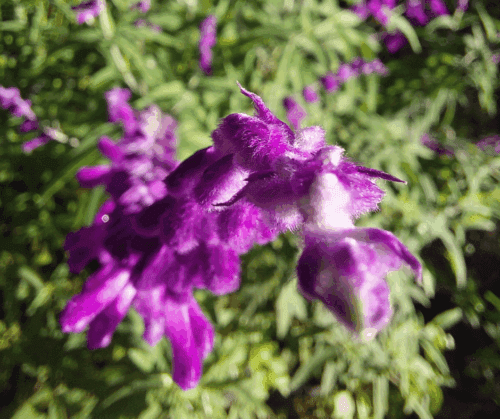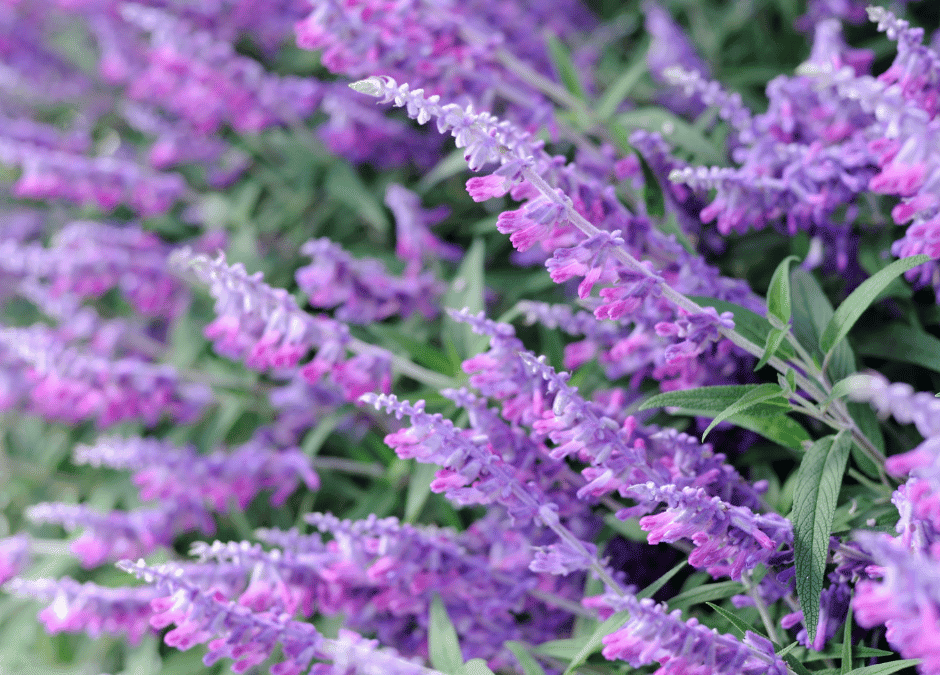If you’re looking for a show-stopping plant that thrives in San Antonio’s hot, dry climate, growing Mexican Bush Sage (Salvia leucantha) should be at the top of your list. This striking perennial brings waves of purple-and-white or purple-and-lavender blooms to your landscape just when many other flowers are fading—making it a superstar for fall gardens and a valuable nectar source for hummingbirds, butterflies, and bees.
Aesthetic Appeal: Velvety Beauty in the Garden
Mexican Bush Sage (Salvia leucantha) is famous for its soft, velvety flower spikes that appear in late summer and continue well into fall. The flowers rise above graceful gray-green foliage, creating a lush, cottage-garden look with a distinctly Texan flair. Each plant grows into a rounded, bushy mound, and when in full bloom, it practically glows with color. Whether planted in mass for a dramatic sweep of purple or used as an accent in a mixed bed, this salvia delivers unmatched seasonal beauty.

Growing Requirements in San Antonio: Mexican Bush Sage
-
Soil Type: Mexican Bush Sage thrives in well-draining soil. While it tolerates clay soils, amending with compost or sand improves drainage and root health.
-
Water Usage: This salvia is drought-tolerant once established. This makes it a perfect perennial option for our region’s hot summers and occasional water restrictions. Water deeply but infrequently, allowing the soil to dry out between waterings.
-
Light Requirement: Full sun is essential for abundant blooms. Aim for at least 6 hours of direct sunlight daily, preferably in the morning to early afternoon hours. In partial shade, plants may grow leggy and produce fewer flowers.
-
Mature Size: Expect Mexican Bush Sage (Salvia leucantha) to reach about 3–4 feet tall and 3–6 feet wide, depending on conditions. Give it room to spread when planting.
-
Fertilization: This plant isn’t a heavy feeder. Apply a balanced, slow-release fertilizer in spring as new growth emerges. Too much fertilizer can encourage foliage growth at the expense of flowers.
-
Pruning & Dividing:
-
Spring: Cut plants back nearly to the ground after the last frost (usually early Feb) to encourage fresh, vigorous growth.
-
Summer: Light trimming helps keep the shape tidy.
-
Fall: Enjoy the blooms—this is their season! No pruning needed until winter dieback.
-
Dividing: Every few years, you can divide large clumps in late fall (late Nov) or early spring (Feb) to rejuvenate plants and create more for your garden.
-

Why Fall is the Best Season for Mexican Bush Sage
Unlike many summer blooming salvias and sages, Mexican Bush Sage saves its big show for autumn. In San Antonio, plants burst into flower around September and keep blooming until the first frost. This timing makes it especially important for pollinators, providing nectar when other sources are scarce. If you love watching hummingbirds dart and sip in your garden, this plant is a magnet for them during migration season.

Unique Facts That Make Salvia Leucantha Irresistible
- Low Maintenance: Once established, it requires little care beyond seasonal pruning.
- Deer Resistant: A great choice for gardeners on the edges of town where deer are frequent visitors.
- Versatile Use: Works beautifully in xeriscape gardens, cottage-style plantings, or even containers (though it prefers room to spread).
- Soft Texture: Its velvety flowers aren’t just pretty—they’re touchable, adding a sensory element to the garden.
For San Antonio gardeners, growing Mexican Bush Sage is both easy and rewarding. It delivers vibrant color, supports pollinators at a crucial time of year, and stands up to our tough climate with grace. If planting now, in September, look for plants with buds forming or in bloom so you’ll have a garden buzzing with life and glowing with purple splendor during the October pollinator migration.
~The Happy Gardener, Lisa Mulroy

